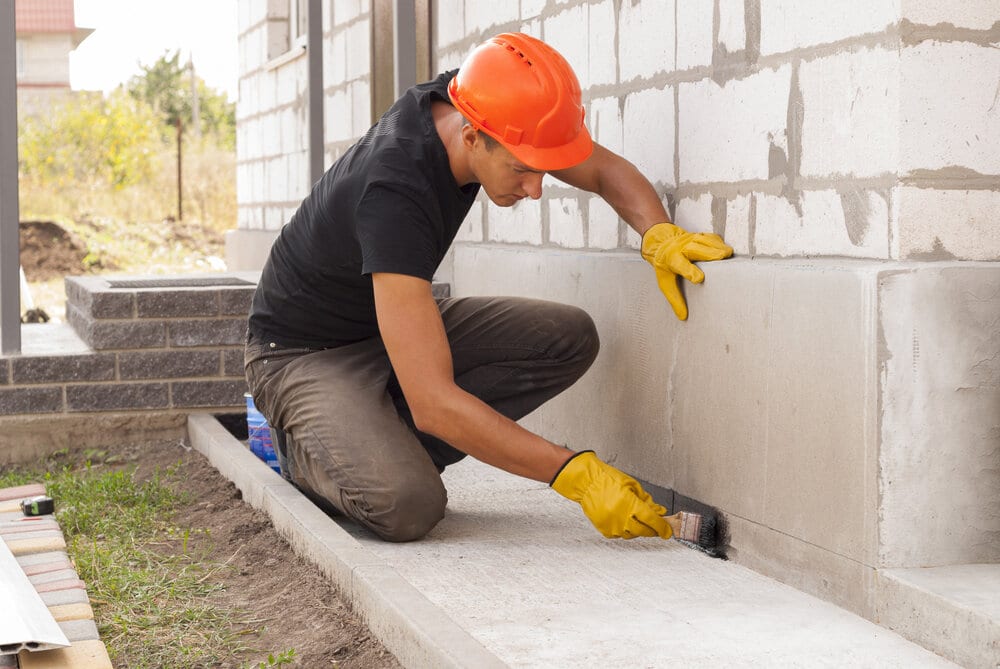The soil around your home is very important to the stability of your foundation. Different soils expand and contract at different rates, which can stress your foundation and lead to cracks or other damage. For example, clay soils expand when they’re wet and contract when they’re dry. This can cause problems for foundations because the soil will push against the foundation when it expands and then pulls away from the foundation when it contracts. This can cause cracks in the foundation or other damage. To understand how each type of soil impacts the rate of foundation repair, it’s first important to understand the different types of soil.
The different types of soil and their impact on the foundation:
While geography has classified soil into quite a few categories, when it comes to houses, there are only three major types of soil: sand, clay, and loom.
Sand: By definition, sandy soil is more than 50% sand and less than 50% clay. Sandy soil is loose and has large particles. It doesn’t hold water well, allowing water to move through it easily. This type of soil is found near the coast or in river valleys. The properties of sand mean that any foundation built on it will have good drainage. This is because water will not pool around the foundation and cause problems like hydrostatic pressure.
Clay: Clay soil is made up of small particles that bind together to form a compact mass. It has a high shrink-swell rate, which means it can expand or contract a lot depending on the air’s moisture. When clay soil expands, it can put a lot of pressure on foundations and cause cracks. When it contracts, it can leave voids around the foundation that can lead to sinkholes.
Loom: Loom is a mix of sand and clay. Its particle size falls between sand and clay, which gives it some of the properties of both. Loom is not as compact as clay but can still hold water and expand when wet. It also doesn’t have good drainage of sand, which means that water can pool around the foundation and cause problems.
The right type of soil for your foundation:
The best type of soil for a foundation is a sandy loam. This type of soil has the drainage of sand and the stability of a loom. It is not as prone to expansion and contraction as clay, but it still has enough clay to bind the particles together and provide a solid base for a foundation. In the United States, Sandy Loam is found in parts of the Midwest, Northeast, and South. If you are not sure what type of soil your home is built on, you can order a soil test from a local engineering firm. They will take samples of your soil and test it to see its type. Once you know the soil type, you can ensure that your foundation is built on the right type of soil for your area.
Does that mean other types of soil are doomed to fail?
Not really. All soil types have the potential to cause problems for foundations, but some are more likely to cause problems than others. For example, sandy soil is less likely to expand and contract than clay soil, so it is less likely to put pressure on a foundation and cause cracks. However, all soils can be affected by factors like drought or flooding, so it’s important to keep an eye on the moisture content of the soil around your foundation. If you see any signs of cracking or other damage, it’s important to get it checked out by a professional as soon as possible.
What can you do about bad soil?
If you have clay soil or loom around your foundation, you can do a few things to help stabilize it. One option is to install an underground drainage system. This will collect water that would otherwise pool around your foundation and channel it away from the house. Another option is to inject a stabilizing solution into the soil to help reduce its shrink-swell rate. This is a more expensive option, but it can effectively reduce foundation damage.
No matter what type of soil you have, it’s important to keep an eye on the moisture content and ensure that your foundation is stable. If you see any cracks or other damage, don’t hesitate to get it checked out by a professional. Pre-care is also an important part of maintaining your foundation’s health. If you have the time, consult a local engineering firm to order a soil test. This will give you an idea of what type of soil is around your foundation and help you ensure that it is the right type for your area. Don’t forget to check the moisture content surrounding your foundation’s soil! If you see any cracks or other damage, get it checked out by a professional as soon as possible. With the right knowledge and care, you can maintain a healthy foundation regardless of soil type.

